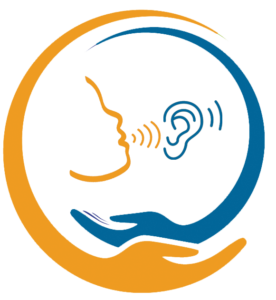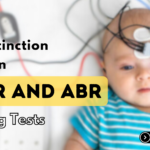Understanding the Distinction Between ASSR and ABR Hearing Tests
In the field of audiology, it is essential to grasp the distinctions between various types of hearing tests. The difference between ASSR and ABR hearing tests carries significant importance. Audiologists frequently encounter situations where the choice of the appropriate test can have a substantial impact on diagnosis and treatment. Let’s explore the intricacies of these two tests to gain insight into their subtleties and applications.
Comprehending the ASSR Hearing Test
The Auditory Steady-State Response (ASSR) hearing test stands as a valuable asset in audiology. It surpasses traditional audiometry by employing frequency-specific stimuli to elicit neural responses. In contrast to standard tests, ASSR offers a more thorough evaluation of the functionality of the auditory system.
Comprehending the ABR Hearing Test
On the flip side, the Auditory Brainstem Response (ABR) test gauges the electrical activity of the auditory nerve and brainstem in response to auditory stimuli. It functions as a dependable method, especially in situations where patient cooperation might pose a challenge.
Key Difference between ASSR and ABR Hearing Tests
Exploring the realm of hearing assessments requires a nuanced understanding of the key differences between Auditory Steady-State Response (ASSR) and Auditory Brainstem Response (ABR). This knowledge is crucial for informed decision-making regarding one’s auditory well-being. Three essential aspects differentiate these tests.
Specificity in Frequencies:
The initial point of divergence concerns the frequency specificity inherent in these assessments. ASSR employs a specialized approach, concentrating on particular frequencies to offer a comprehensive analysis of the auditory system’s response to steady-state tones.
In contrast, ABR adopts a broader perspective, examining neural responses across a spectrum of frequencies. This distinction is significant for tailoring the testing method to an individual’s unique hearing profile.
Assessment of Neural Responses:
Another crucial disparity involves the evaluation of neural responses. ASSR primarily measures the brain’s response to auditory stimuli, emphasizing the steady-state aspect for determining thresholds.
Conversely, ABR delves deeper, assessing the electrical activity of the auditory nerve and brainstem in response to sound. This variation highlights the diverse insights each test provides into the intricate neural processes underlying hearing function.
Patient Cooperation Requirements:
The third point of difference revolves around the level of patient cooperation each test necessitates. ASSR, with its frequency-specific approach and steady-state tones, proves advantageous for individuals who may face challenges in cooperating during a traditional hearing test, such as infants or those with cognitive impairments.
ABR, with its more extensive assessment, is versatile across various age groups, accommodating a broader range of patient cooperation levels.
Advantages and Disadvantages
- ASSR Benefits: Simultaneous evaluation of frequencies, particularly beneficial for difficult-to-test groups.
- ASSR Drawbacks: Vulnerable to patient cooperation issues, potential need for sedation.
- ABR Benefits: Swift outcomes, applicable across various age groups.
- ABR Drawbacks: Sensitivity to surrounding noise, considerations for electrode placement.
When to Use ASSR or ABR
When considering the difference between ASSR and ABR hearing tests, it’s crucial to understand the specific clinical scenarios where each test shines.
1. Clinical Situations Appropriate for ASSR
ASSR, or Auditory Steady-State Response, demonstrates proficiency in situations where precise frequency-specific information is crucial. This assessment is particularly valuable when dealing with individuals who may face challenges in actively participating in a standard hearing evaluation. Clinical scenarios appropriate for ASSR encompass testing infants, patients with developmental disabilities, and those with limited responsiveness to conventional auditory stimuli. The frequency-specific data provided by ASSR contributes to a more nuanced comprehension of hearing thresholds, making it a favored option for specific patient groups.
How ASSR Hearing Test at Aural Care Can Transform Your Auditory Experience?
2. Clinical Situations Appropriate for ABR
Conversely, ABR, or Auditory Brainstem Response, is the preferred choice in clinical situations where a thorough evaluation of the auditory nerve and brainstem is of utmost importance. This assessment proves particularly beneficial for diagnosing neurological hearing disorders and comprehending the neural pathways involved in auditory processing. Clinical scenarios suitable for ABR include cases demanding a comprehensive assessment of the auditory system’s integrity, rendering it the preferred option for individuals with suspected neurological implications in their hearing concerns.
Cost and Accessibility
The financial aspect of healthcare always plays a significant role. Analyzing the financial implications and availability of ASSR and ABR aids healthcare providers in making well-informed decisions within the constraints of their budgets and resources.
Comparison of Costs
When evaluating the difference between ASSR and ABR hearing tests, one pivotal consideration is the associated expenses. ASSR testing may present a more economical option due to its expedited results, while ABR, involving a comprehensive neurological assessment, might incur higher costs. Insight into these cost differences empowers individuals to make informed choices aligned with their financial considerations.
Accessibility in Different Healthcare Settings
Examining the accessibility of ASSR and ABR across various healthcare settings is essential. ASSR often demonstrates greater adaptability and accessibility in diverse environments, while ABR, being more specialized, may be readily available in specialized healthcare facilities. Recognizing this differentiation ensures individuals can access the most suitable hearing test based on their healthcare setting and specific needs.
Data Insights: A User-Friendly Perspective
To improve user interaction, let’s share estimated percentage information concerning the frequency and utilization of ASSR and ABR hearing tests:
- Pediatric Evaluations: ASSR – around 70%, ABR – approximately 30%
- Screening for Newborns: ABR – roughly 80%, ASSR – about 20%
- Challenging-to-Test Demographics: ASSR – approximately 90%, ABR – roughly 10%
In conclusion, the difference between ASSR and ABR hearing tests extends beyond a basic comprehension. Audiologists need to take various factors into account when choosing the most suitable test for a specific clinical situation. The dynamic nature of audiology testing presents exciting opportunities and challenges, contributing to the continuous evolution of the field.
Aural Care encompasses a thorough understanding of services dedicated to maintaining and improving hearing health. This includes preventive measures, counseling, and interventions focused on promoting optimal auditory well-being. Aural Care, Best hearing test clinic in Kolkata, goes beyond simple diagnostics, emphasizing a proactive approach to ensure individuals receive the necessary assistance, education, and interventions tailored to their unique hearing needs.
Aural Care Kolkata

Aural Care is the Best Hearing Aid Clinic in Kolkata offering high quality facilities with lots of experienced doctors. We have 15 years experience in this field. Here, we offer the most comprehensive diagnostic facilities and the latest and best technology in hearing aids.
Address: GB7, 822, Rajdanga Main Road . Opp. GST Bhawan. Kol 700107
Phone: +91 98315 37979
Mail: info@auralcarekolkata.in
Follow us
Facebook: facebook.com/AuralCareCenterKolkata
Instagram: instagram.com/auralcarecenter

